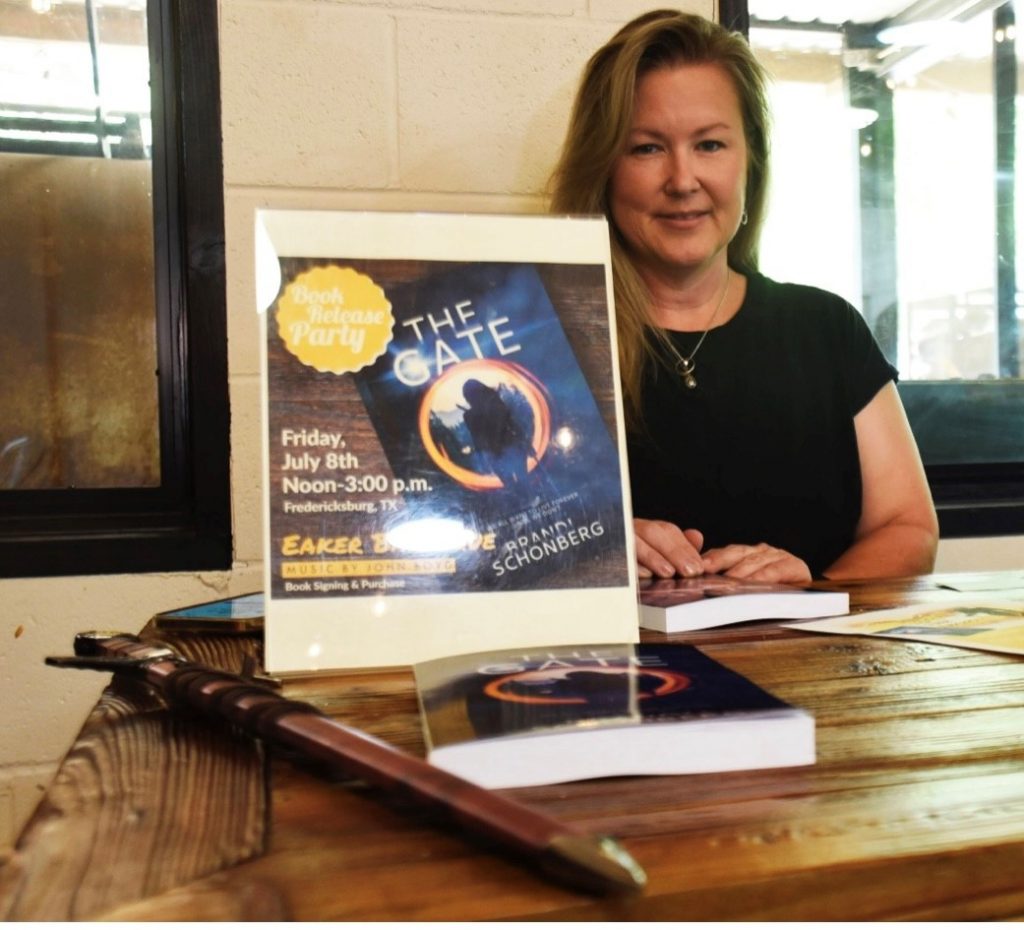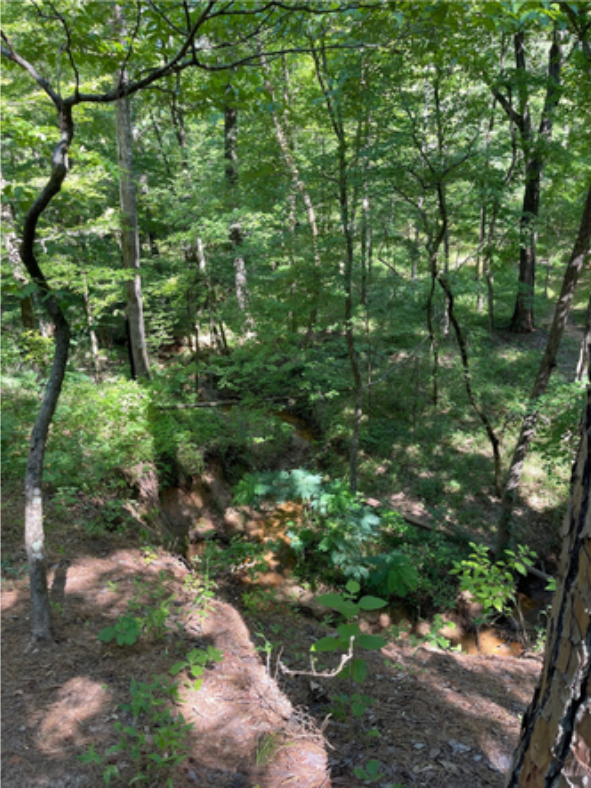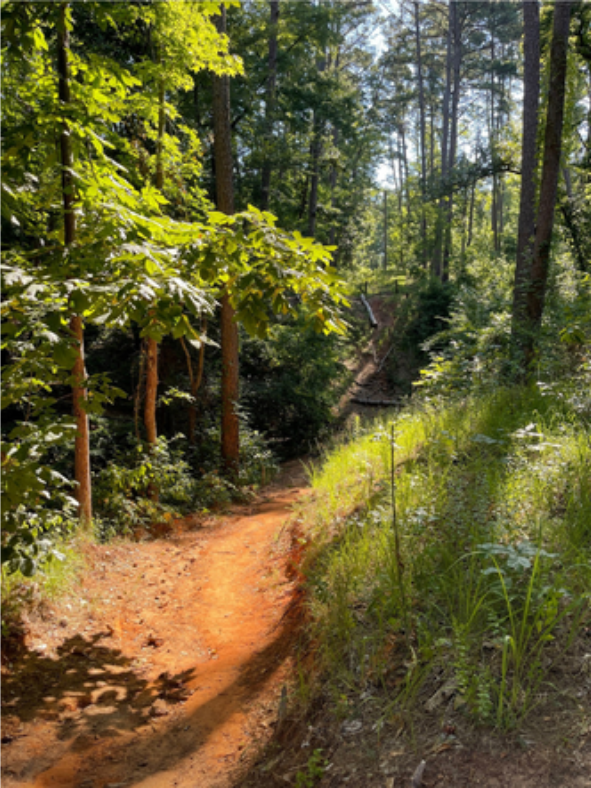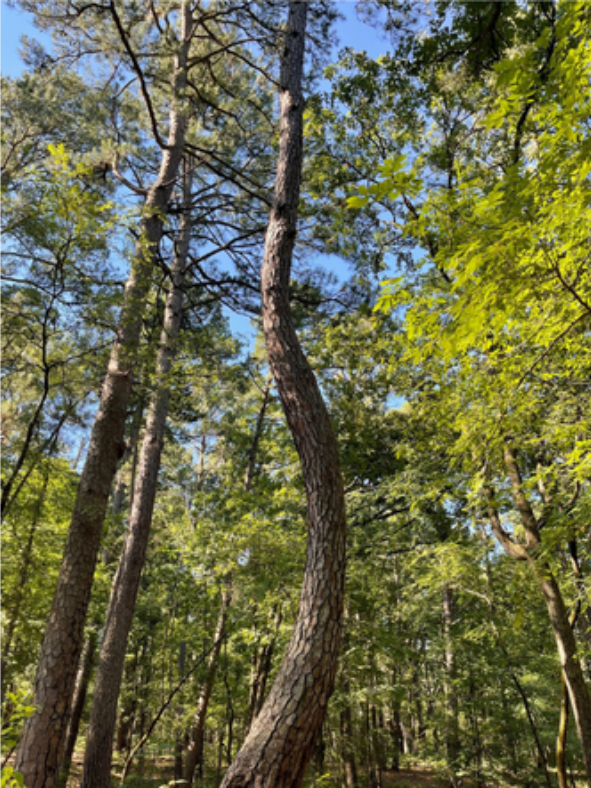
Readers of author Brandi Schonberg’s new adult fantasy novel “The Gate” may find a recognizable setting in its pages. While one might expect otherworldly scenes in a fantasy story, a setting in “The Gate” is actually inspired by the natural magic and beauty of Tyler State Park.
Brandi Schonberg, author of “The Gate,” is a middle school science teacher and fantasy enthusiast based in Fredericksburg, Texas. Published last June, “The Gate” is her debut novel and the first of her series, “The Immortal Coil Saga.” The first novel follows Amarynn, an immortal warrior who has no memory of her past and is seeking an escape from a life she’s had enough of.
“[Amarynn] is immortal, so she’s seeking mortality and freedom … but she selfishly gave away a lot of secrets about how she was created … in a trade to try to unmake herself. Now, she has to go right her wrongs,” Schonberg said.
To do this, Amarynn must face the dark mage Venalise and work to recover the Gate, the magical stone which is the key to immortality, alongside the Crown Prince of Karth, Jael.
A world inspired by the piney woods

Throughout “The Gate,” Schonberg paints a vivid picture of Amarynn’s fantastical surroundings, including the lush forest landscape on the island of Vhaleese, where the crown prince’s mother hails.
While readers get a glimpse of Vhaleese in the first book, Schonberg said the sequel she is currently writing, “The Mage Crown,” further explores the island as well as other new characters and places.
“We just expand into the world a lot more,” Schonberg said. “It’s not just on Amarynn anymore, so our main character list grows a little bit…[and] we’re going to move into three or four very important people and start telling their stories and how they all interconnect. That’s where Tyler State Park came in.”
Schonberg visited the wooded park on Farm-to-Market 14 for the first time over the summer with the intention of kayaking. She was struggling to write “The Mage Crown,” and she certainly didn’t go seeking inspiration.
However, when she arrived at Tyler State Park, she immediately fell in love with it and knew it would be instrumental in visualizing and inspiring the landscape on Vhaleese.
“I took a second, and it really hit me,” she said. “I felt like I was immersed in that part of the world.”
Visualizing her characters in the environment allowed Schonberg to relate to her characters and bring their world to life in a very real way. “I can see the undergrowth and I can see … how they would construct their buildings and their dwellings,” she said. “I know what putting my hand on that tree and stepping around it felt [like], and what it smelled like, and to me … that’s invaluable.”
Schonberg discussed the importance of real life inspiration for authors. “You’re writing about a non-existent world and to be able to immerse yourself in something extremely similar, I think it’s a unique opportunity,” she said.
To bring herself even closer to the tree-dwelling inhabitants of Vhaleese, Schonberg ended her trip by going zip lining. She found that zipping through the trees gave her more insight into her characters and their world, and East Texas already felt like a part of her book. “It took me even further into an experience that I can relate to when I write,” she said.
Building new worlds and cultures

Schonberg shared a bit about her writing process building new and exciting worlds and being open to the journey writing takes her on. “I’m still learning the world,” Schonberg said. “I’m very much … a discovery writer. I can’t plot to save my life, and it’s what’s taken me on this journey.”
Schonberg said throughout the experience of writing “The Immortal Coil Saga,” she’s had to immerse herself in the culture of her books, especially as the world expands in “The Mage Crown.”
“I have a language I’m working on – a whole other culture set, with subdivisions in that culture,” she said.
As the author, she acknowledged there is still more to discover and prizes moments like those she had at Tyler State Park .
Personal influences
Schonberg described her other inspirations for her writing. As a teacher, she found motivation in the enthusiasm of her students, and she even included an acknowledgement in “The Gate” to the seventh period pre-AP class she taught three years ago.
“Every day when I would walk in, somebody would say, ‘What’s your word count now? Did you write last night?’ I had a running tally of my word count on the board. They’re all vying for positions to be characters in the next book,” she said.
While her students inspired her during the writing process, Schonberg said her late husband’s influence is at the heart of her inspiration. In “The Gate,” Amarynn is driven by her wish for mortality, but throughout the novel she begins to question that desire.
“The inspiration for writing this entire book … [was] the idea of a woman who is out of place, out of time, unhappy, fairly miserable, wanting for that to be over, but then finding out that maybe that’s not what she really wants. That was all born out of my personal life with my husband,” Schonberg said.
Schonberg said her husband inspired her to tackle the topic of mental health in her writing. “He struggled with anxiety and depression and lots of mental health issues,” she said.
As Schonberg wrote “The Gate,” she said to herself, “Write your story to be the story you want for him.”
Schonberg said “The Gate,” would not exist without her relationship with her husband. “The goal is for [Amarynn] to eventually find peace … and I think that’s what I wanted for him,” she said.
Although Schonberg set out to incorporate the impact of mental health struggles in her books, she wants to leave the labels and stigma out of it.
“We’re so stuck on the label … on anything that has to do with anxiety and depression and OCD and ADHD,” she said. “I wanna take the reality of those emotions, those feelings … and roll it into a world where those labels don’t exist, but you can see them happening.”
Schonberg believes in focusing on the experience of these feelings through her characters. “I don’t think we focus on what those emotions and those things feel like, and I’m trying to do that … with a couple of these characters,” she said. “Let’s just talk about the person and let’s talk about what they’re doing and what they’re feeling and how they’re acting.”
Schonberg is hopeful her approach will resonate with readers who struggle with mental health. “I’m hoping maybe people can identify without having to have a label attached to it,” she said.
What readers can look forward to

Schonberg is excited about readers’ growing anticipation as the continuation of the series becomes more imminent. She revealed the world will continue to expand as the series goes on, and learning more about Amarynn’s world is something readers can look forward to in “The Mage Crown.”
“You’re gonna really get to know the world so much better,” Schonberg emphasized. “It’s gonna be … a much bigger beast than just this first book.”
In the end, Schonberg promised the series is going to be “surprising” as it unfolds, and she has a central message she hopes resonates with readers as they follow Amarynn’s journey.
“Just because the situation you are in is not the one you want doesn’t mean it can’t change,” she said.
Victoria Carpenter, originally from Fort Worth, Texas, has been a resident of Tyler for the past eight years. She received her associate’s degree in General Studies from Tyler Junior College in 2019 and graduated from The University of Texas at Tyler in the spring of 2022, where she studied English and psychology.
Paul Haygood is a licensed massage therapist, professional juggler and music student. After working as a commercial salmon fisherman in Alaska, a massage therapist on cruise ships and at Grand Teton ski-area spas and as a juggling and yoga teacher in Guatemala, he returned to his East Texas roots to spend time with his father and pursue voice and piano studies at what may be the best two year college anywhere, Tyler Junior College.
Love what you're seeing in our posts? Help power our local, nonprofit journalism platform — from in-depth reads, to freelance training, to COVID Stories videos, to intimate portraits of East Texans through storytelling.
Our readers have told us they want to better understand this place we all call home, from Tyler's north-south divide to our city's changing demographics. What systemic issues need attention? What are are greatest concerns and hopes? What matters most to Tylerites and East Texans?
Help us create more informed, more connected, more engaged Tyler. Help us continue providing no paywall, free access posts. Become a member today. Your $15/month contribution drives our work.







